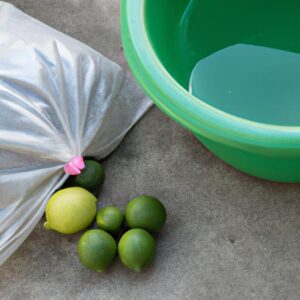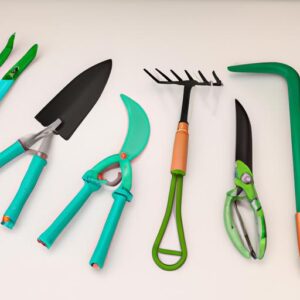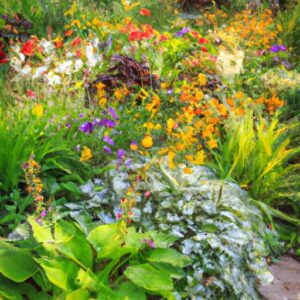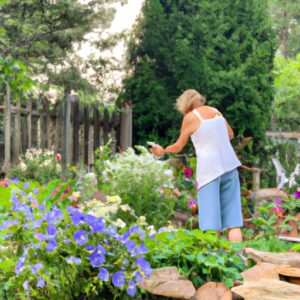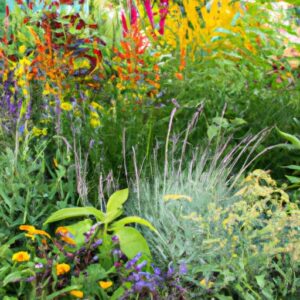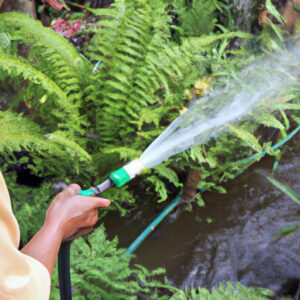Welcome to the world of gardening, where every seed holds the promise of a beautiful and bountiful harvest. But have you ever wondered if those packets of seeds you’ve had tucked away for years are still viable? do gardening seeds expire? Let’s dive into this intriguing question and uncover the truth behind seed expiration.
Introduction
Gardening is a beloved hobby that brings joy, beauty, and delicious homegrown produce to our lives. Whether you’re an experienced green thumb or just starting your gardening journey, the quality of your seeds plays a crucial role in the success of your garden. But as time passes, seeds can lose their viability, leaving you with disappointing results.
Importance of Gardening Seeds
Seeds are the life force of your garden. They contain the genetic blueprint that determines the traits and characteristics of the plants they will grow into. As gardeners, we invest our time, effort, and love into nurturing these seeds, hoping to witness their transformation into vibrant plants and abundant harvests. However, using expired seeds can significantly impact the success of our gardening endeavors.
Expired seeds often have reduced germination rates, meaning they are less likely to sprout and grow into healthy plants. Planting with expired seeds can lead to wasted time and effort, as well as disappointment when our anticipated garden fails to flourish. Therefore, it is essential to understand seed expiration and its impact on our gardening ventures.
Stay tuned as we delve deeper into the concept of seed expiration and explore the signs of expired seeds. Discover the factors that affect seed longevity and uncover valuable tips to extend the lifespan of your seeds. By the end of this article, you’ll be equipped with the knowledge and expertise to ensure your seeds are always fresh and full of life.
Next up, let’s explore the concept of seed expiration and understand what happens when seeds reach their expiration date.
Understanding Seed Expiration
Definition of Seed Expiration
Before we dive into the intricacies of seed expiration, let’s clarify what it actually means. Seed expiration refers to the point at which a seed’s ability to germinate and grow into a healthy plant diminishes significantly. Seeds are living organisms, and like all living things, they have a limited lifespan. As time passes, the viability and vigor of seeds gradually decline, resulting in lower germination rates.
Factors Influencing Seed Expiration
Several factors can influence the expiration of seeds. Understanding these factors can help us determine the lifespan of our seeds and make informed decisions regarding their usage. Here are some key factors that can affect seed expiration:
-
Seed Type: Different types of seeds have varying expiration dates. Some seeds, such as tomatoes and beans, can remain viable for several years, while others, like onions and parsnips, have shorter shelf lives. Knowing the average expiration period for each seed type is crucial for successful gardening.
-
Storage Conditions: The environment in which seeds are stored plays a vital role in their longevity. Factors such as temperature, humidity, and exposure to light can accelerate seed deterioration. Proper storage techniques, such as keeping seeds in a cool, dry, and dark place, can help extend their lifespan.
Shelf Life of Different Types of Seeds
Now, let’s take a closer look at the shelf life of different types of seeds:
-
Short-Lived Seeds: Some seeds, like lettuce and corn, have relatively short shelf lives. These seeds are typically viable for one to two years. It’s essential to use them promptly to maximize their germination potential.
-
Medium-Lived Seeds: Seeds such as carrots and radishes fall into the medium-lived category. With proper storage, they can remain viable for two to three years. However, it’s advisable to use them within the first two years for optimal results.
-
Long-Lived Seeds: Certain seeds, such as peppers and cucumbers, have a longer shelf life. These seeds can remain viable for three to five years, provided they are stored correctly. However, it’s recommended to use them within the first three years for higher germination rates.
Understanding the expiration dates and lifespan of different seeds is crucial for successful gardening. In the next section, we will explore the signs that indicate your seeds may have reached their expiration date. Stay tuned to learn how to identify expired seeds and save yourself from disappointment in the garden.
Signs of Expired Seeds
When it comes to gardening, using fresh and viable seeds is crucial for a successful harvest. But how can you tell if your seeds have expired? Look out for these signs that indicate your seeds may no longer be viable:
Physical Appearance
One of the easiest ways to identify expired seeds is by examining their physical appearance. Old seeds may appear dull, discolored, or shriveled. They might have a brittle texture and feel lightweight in your hand. Keep in mind that not all seeds will show obvious signs of deterioration, but these visual cues can be a helpful indicator.
Germination Test
To determine the viability of your seeds, a germination test is a reliable method. It’s a simple process that helps you assess the potential for successful sprouting. To conduct a germination test, take a sample of your seeds and place them between moist paper towels or in a seedling tray filled with seed-starting mKeep the environment warm and moist, providing optimal conditions for germination. After a specified period, typically a week or two, check the seeds for sprouting. If a significant number fail to germinate, it’s a clear sign that your seeds have expired.
Remember, even if your seeds have passed their expiration date, it doesn’t mean they are entirely useless. Some may still germinate, albeit at a lower rate. However, for gardeners seeking optimal results, it’s best to use fresh and viable seeds.
Now that we know how to identify expired seeds, let’s explore the factors that contribute to seed longevity in the next section.
Factors Affecting Seed Longevity
To ensure the longevity of your gardening seeds, it is crucial to understand the factors that can affect their viability. Let’s explore three key factors that play a significant role in determining how long your seeds will stay viable.
Storage Conditions
Proper storage conditions are paramount when it comes to preserving seed viability. Seeds should be stored in a cool, dry, and dark environment. Excessive heat can damage the seeds and reduce their ability to germinate. Moisture is another enemy of seed longevity, as it can lead to mold growth or seed rot. Therefore, it’s essential to store your seeds in a moisture-free environment, such as airtight containers or sealed bags with desiccant packets.
Moisture and Temperature
Moisture and temperature are closely intertwined and can have a profound impact on seed viability. High humidity levels can cause seeds to absorb moisture, which triggers the germination process and diminishes their shelf life. On the other hand, extremely low temperatures can also damage seeds. Freezing temperatures can cause the seeds to crack or lose their viability. It is important to strike a balance between temperature and moisture levels to maintain optimal seed storage conditions.
Light Exposure
Believe it or not, light exposure can affect the longevity of your seeds. Some seeds, especially those that are light-sensitive, may deteriorate when exposed to direct light. To protect your seeds from light exposure, store them in opaque containers or keep them in a dark and secluded place. This simple step can go a long way in preserving the viability of your seeds.
By being mindful of these factors and implementing proper storage techniques, you can significantly extend the lifespan of your gardening seeds. Let’s move on to the next section, where we will discuss ways to maximize the longevity of your seeds through proper storage and viability testing.
Extending Seed Lifespan
Seeds are like tiny time capsules, preserving life within their protective shells. While they do have a natural expiration date, there are ways to extend their lifespan and ensure their viability for future planting. Let’s explore two key methods to help you make the most of your precious seeds.
Proper Seed Storage Techniques
Just like any perishable item, seeds require proper storage conditions to maintain their viability. Here are some essential tips to keep in mind:
-
Cool and Dry: Moisture and heat can quickly degrade seeds. Store them in a cool, dry place, away from direct sunlight and extremes in temperature. A temperature range of 40-50°F (4-10°C) is ideal for most seeds.
-
Air-Tight Containers: To prevent moisture and humidity from reaching your seeds, store them in air-tight containers. Mason jars, resealable bags, or seed storage envelopes work well for this purpose.
-
Labeling and Organization: Keep your seeds organized by labeling each container with the seed variety and date of purchase. This helps you easily identify and rotate your seed stock, ensuring you use the oldest seeds first.
-
Freezer Storage: Certain seeds benefit from freezer storage, which can significantly extend their lifespan. Before freezing, ensure your seeds are completely dry and sealed in moisture-proof containers or bags. Remember to allow them to come to room temperature before opening the container to prevent condensation.
Seed Viability Testing
Even with proper storage, some seeds may lose their viability over time. To determine if your seeds are still viable before planting, conduct a simple germination test:
-
Damp Paper Towel Test: Moisten a paper towel and place a few seeds on it. Fold the towel over the seeds and keep it in a warm location. Check the seeds regularly for signs of germination, such as sprouting roots or shoots. If a high percentage of seeds germinate, they are still viable and ready for planting.
-
Float Test: For larger seeds, like beans or peas, you can perform a float test. Fill a container with water and place the seeds in it. Viable seeds will sink to the bottom, while non-viable seeds will float to the top.
By following these storage techniques and conducting viability tests, you can ensure that your seeds remain viable for longer periods, giving you the best chances of successful germination and healthy plants.
In the next section, we will conclude our exploration of seed expiration and summarize the key points discussed throughout this article.
Conclusion
In conclusion, understanding the expiration of gardening seeds is crucial for every gardener. As we’ve discovered, seeds do have a shelf life and can expire over time. Using expired seeds can lead to disappointing results and wasted efforts in our beloved gardens.
By familiarizing ourselves with the signs of expired seeds and the factors that affect seed longevity, we can take proactive steps to ensure the success of our gardening endeavors. Proper seed storage techniques, such as keeping seeds in a cool and dry place, can significantly extend their lifespan. Regular seed viability testing is also essential to determine if the seeds are still viable and worth planting.
Remember, every seed holds the potential for new life and a thriving garden. By paying attention to seed expiration dates and taking proper care of our seeds, we can maximize their viability and increase our chances of a successful harvest.
So, the next time you reach for that packet of seeds tucked away in your gardening toolbox, ask yourself, “do gardening seeds expire?” Armed with the knowledge gained from this article, you’ll be confident in making the most of your seeds and embarking on a fruitful gardening journey.
Happy gardening, and may your seeds always flourish and bloom!
